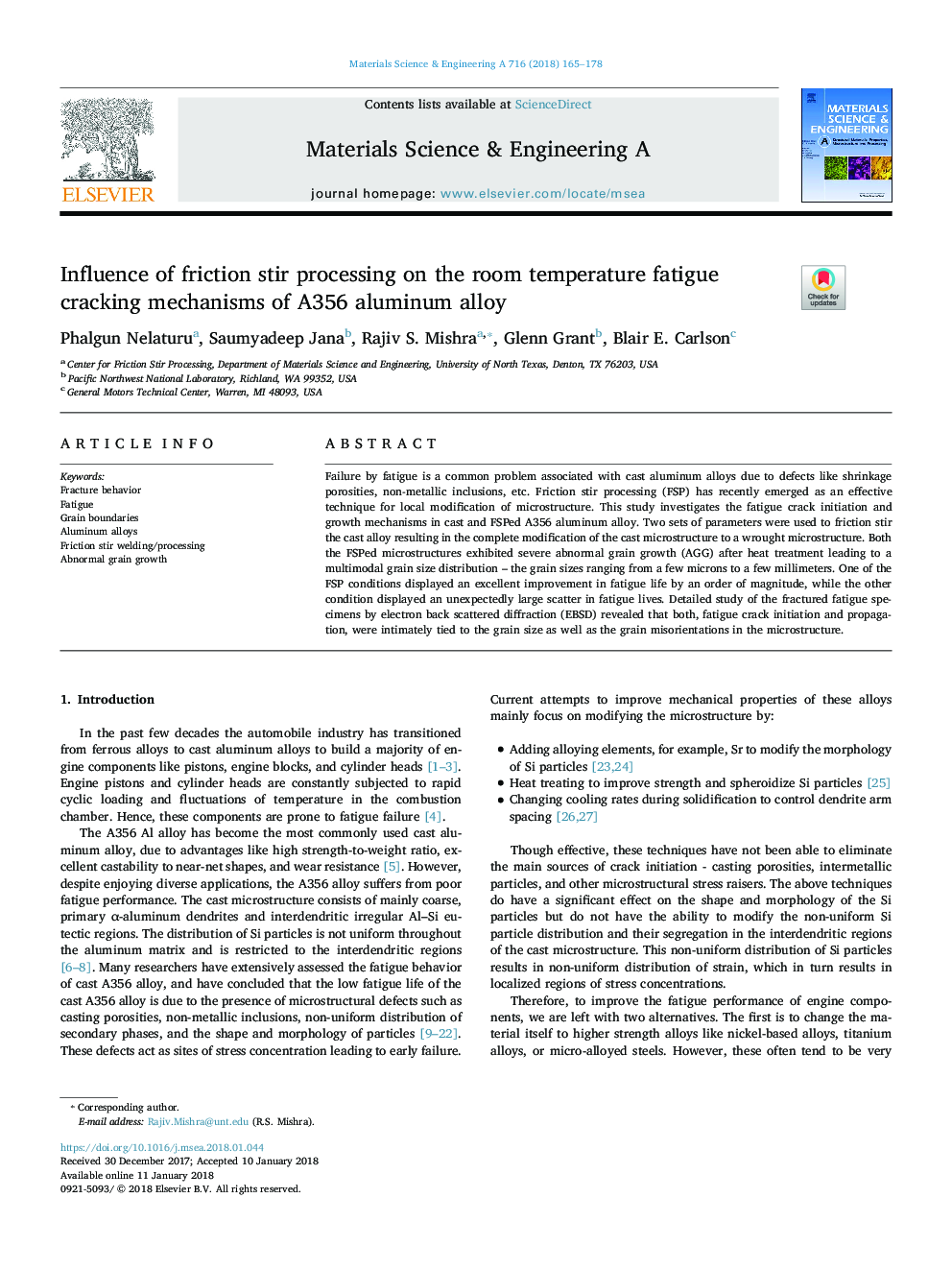| Article ID | Journal | Published Year | Pages | File Type |
|---|---|---|---|---|
| 7973476 | Materials Science and Engineering: A | 2018 | 14 Pages |
Abstract
Failure by fatigue is a common problem associated with cast aluminum alloys due to defects like shrinkage porosities, non-metallic inclusions, etc. Friction stir processing (FSP) has recently emerged as an effective technique for local modification of microstructure. This study investigates the fatigue crack initiation and growth mechanisms in cast and FSPed A356 aluminum alloy. Two sets of parameters were used to friction stir the cast alloy resulting in the complete modification of the cast microstructure to a wrought microstructure. Both the FSPed microstructures exhibited severe abnormal grain growth (AGG) after heat treatment leading to a multimodal grain size distribution - the grain sizes ranging from a few microns to a few millimeters. One of the FSP conditions displayed an excellent improvement in fatigue life by an order of magnitude, while the other condition displayed an unexpectedly large scatter in fatigue lives. Detailed study of the fractured fatigue specimens by electron back scattered diffraction (EBSD) revealed that both, fatigue crack initiation and propagation, were intimately tied to the grain size as well as the grain misorientations in the microstructure.
Keywords
Related Topics
Physical Sciences and Engineering
Materials Science
Materials Science (General)
Authors
Phalgun Nelaturu, Saumyadeep Jana, Rajiv S. Mishra, Glenn Grant, Blair E. Carlson,
